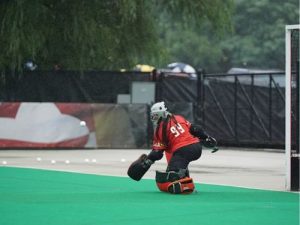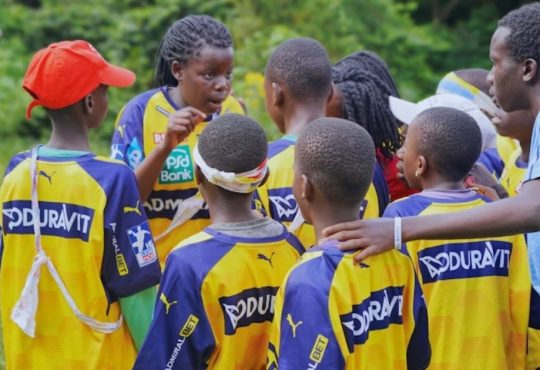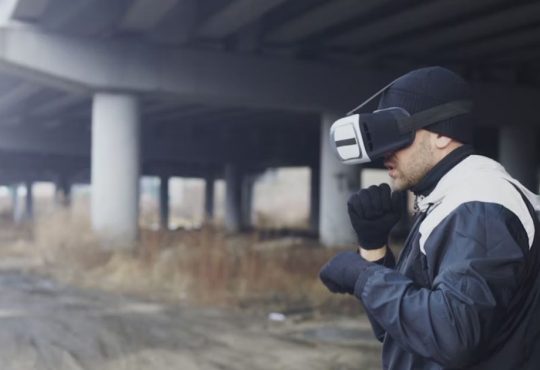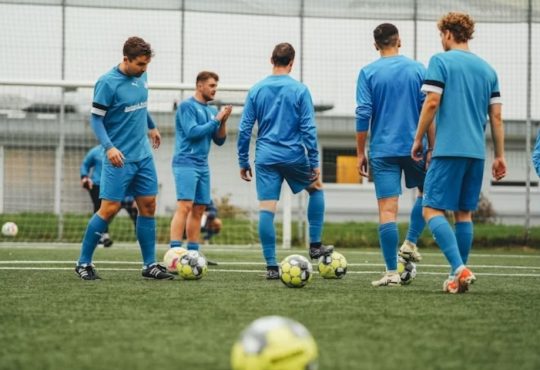Once considered a niche pastime confined to local rinks and small communities, roller hockey is now experiencing a remarkable renaissance, capturing the imagination of athletes and fans worldwide. Its blend of high-speed action, precise skill, and strategic gameplay offers a fresh alternative to more mainstream sports, such as ice hockey and soccer, while remaining accessible to newcomers.
This revival is more than just a fleeting trend—it represents a cultural shift, merging the nostalgia of the sport’s early days with modern athletic innovation and the vibrant energy of urban sports culture. From pop-up tournaments in city streets to viral trick-shot videos on social media, roller hockey is reclaiming its place as a dynamic, inclusive, and exciting sport for a new generation.
A Rich History
Roller hockey, also known as rink hockey or quad hockey, has a history that stretches back to the late 19th and early 20th centuries, reflecting both the evolution of roller skating and the human fascination with fast-paced, competitive sports. The earliest organized games were played on wooden floors in gymnasiums or on smooth outdoor rinks, often as a social pastime among young athletes and college students in Europe and North America. These early matches were informal yet energetic, blending elements of ice hockey, field hockey, and street games, and they quickly caught the attention of sports clubs seeking year-round indoor alternatives to ice sports.
As the sport matured, two distinct forms emerged, each with its own unique style and fan base. Quad roller hockey, played on traditional four-wheeled skates, gained particular popularity in Europe, emphasizing precise stick handling, strategic positioning, and rapid passing. Meanwhile, inline roller hockey, which emerged later with the advent of inline skates in the 1980s, allowed for faster, more fluid gameplay, mirroring the agility of ice hockey while offering the advantage of being playable on streets, sports courts, and multipurpose surfaces.
Certain countries became historical strongholds for roller hockey, elevating it from a recreational pastime to a highly competitive sport. Portugal, Spain, and Argentina emerged as powerhouses, developing robust local leagues, youth programs, and national teams that would go on to dominate international competitions. Legendary players from these regions, known for their speed, precision, and inventive tactics, helped solidify roller hockey’s reputation as a sport of skill and finesse rather than brute strength alone.
Despite its relatively niche status, roller hockey maintained a global presence through organized tournaments. The FIRS Roller Hockey World Cup, first held in the 1930s, provided an international stage that celebrated the sport’s talent and fostered cross-cultural exchange among players and fans. These competitions ensured that roller hockey never faded entirely from the sports landscape, keeping the flame alive for future generations and laying the groundwork for the sport’s modern resurgence.
Why Roller Hockey is Resurfacing

Roller hockey’s resurgence in recent years is no coincidence—a convergence of factors, including accessibility, cultural trends, media exposure, and global expansion, has fueled it. What was once a niche pastime enjoyed only by small communities and dedicated enthusiasts is now drawing attention from a broader audience, including competitive athletes, urban sports aficionados, and casual fans seeking fast-paced, exciting alternatives to traditional team sports. The sport’s renewed visibility reflects not just its athletic appeal but also its cultural relevance, blending a sense of nostalgia with modern social and recreational trends that make it more accessible and engaging than ever before.
Accessibility and Affordability
One of roller hockey’s greatest strengths is its low barrier to entry. Unlike ice hockey, which demands expensive gear, rink fees, and cold environments, roller hockey can be played almost anywhere—community centers, skate parks, driveways, and multipurpose outdoor courts all serve as viable venues. Protective gear, sticks, and inline skates are relatively affordable, making the sport accessible to children, teenagers, and adults without the financial burden often associated with ice hockey. For many families and schools, roller hockey has become an appealing alternative for introducing kids to a fast-paced team sport, fostering skill development and fitness in an inclusive environment.
Urban Sports Culture
Roller hockey fits seamlessly into the urban sports movement, which prioritizes accessibility, agility, and social connection. Its fast, fluid gameplay attracts young athletes seeking dynamic alternatives to traditional sports. Cities around the world are embracing pop-up rinks, street tournaments, and local leagues, creating a hybrid space where competition and community intersect. For urban players, roller hockey offers a unique blend of endurance, creativity, and teamwork, allowing athletes to hone skills that are transferable to other sports while also enjoying a socially engaging experience. The sport’s adaptability to small courts and improvised arenas makes it particularly well-suited to densely populated areas, fueling its growth in metropolitan hubs.
Media Exposure and Social Platforms
Social media has been a game-changer for roller hockey, turning a niche sport into a global spectacle. Platforms like TikTok, YouTube, and Twitch have enabled players to showcase skills, share tutorials, and broadcast matches to a worldwide audience. Viral clips featuring high-speed goals, acrobatic maneuvers, and creative trick shots capture the attention of viewers who may never have stepped onto a rink. Amateur players have also built sizable followings, transforming themselves into influencers within the roller hockey community. This digital visibility is not only attracting new players but also inspiring fans to engage with the sport through streaming, online tutorials, and interactive content, giving roller hockey a fresh cultural relevance.
Globalization of Leagues and Tournaments
Roller hockey’s competitive landscape is expanding rapidly beyond its traditional strongholds in Europe and South America. Countries like the United States, Canada, and Japan are investing in semi-professional leagues, youth programs, and training academies, signaling a long-term commitment to growing the sport. International tournaments, such as the World Roller Games and the European Roller Hockey Championships, are drawing increasing audiences and media attention, elevating the profile of elite players while providing a platform for emerging talent. These events showcase roller hockey’s global appeal, providing fans with thrilling high-level competition while fostering cross-cultural exchange and collaboration within the sport.
Skills and Gameplay

Roller hockey is a sport that demands a rare combination of speed, precision, and strategic thinking. Players must constantly navigate the challenges of friction, momentum, and balance on wheels, which requires exceptional stick-handling, quick reflexes, and sharp decision-making. Unlike ice hockey, the sport requires a different kind of agility; players must anticipate movements, change direction rapidly, and execute plays while maintaining stability on various surfaces. Inline roller hockey, often played on smaller rinks than ice hockey, emphasizes fast, fluid gameplay, encouraging high-scoring matches that keep spectators on the edge of their seats. Standard matches typically consist of two halves of 20–25 minutes, creating a fast-paced, intense experience that demands both physical stamina and mental focus.
Players also develop advanced teamwork and communication skills. Because the rink is smaller and play is continuous, every pass, shot, and defensive maneuver must be precise and coordinated. This emphasis on strategy, combined with individual skill sets roller hockey apart as a sport that is as cerebral as it is athletic, appealing to both players and fans who appreciate a nuanced, high-energy game.
Equipment Innovations
Modern technological advancements in equipment have significantly contributed to the resurgence of roller hockey. Lightweight composite sticks enhance accuracy and shot power while reducing strain on players’ arms, enabling longer play without fatigue. Protective gear has also evolved, with helmets, pads, and gloves designed for comfort, enhanced mobility, and greater impact absorption. High-performance skates, featuring improved wheels and bearings, offer enhanced speed and maneuverability, allowing players to execute complex moves with greater confidence.
Some leagues have even introduced synthetic playing surfaces that mimic the smoothness of ice, reducing friction and minimizing the risk of injury. These innovations make roller hockey more appealing to beginners while offering experienced athletes the tools to elevate their game. As equipment continues to evolve, the sport becomes increasingly accessible and professionalized, helping attract new players and retain dedicated enthusiasts.
Community and Lifestyle
Roller hockey is about more than just competition—it fosters a vibrant, inclusive community. Mixed-gender leagues, local tournaments, and social clubs create opportunities for people of all ages and skill levels to participate, learn, and connect. Many players describe roller hockey as a lifestyle, blending fitness, creativity, and camaraderie in a way that few sports can match.
Cities like Barcelona, Toronto, and Buenos Aires are home to thriving roller hockey cultures, where casual players and elite athletes coexist. Social events, skill-sharing sessions, and local tournaments strengthen bonds among participants, while international tournaments and exhibitions bring global attention to the sport. The culture of roller hockey emphasizes collaboration, respect, and a shared love for the game, making it not just an athletic pursuit but a community-centered experience.
A Fast-Paced Comeback for the Modern Athlete
The future looks promising for roller hockey. As leagues expand, schools integrate roller hockey programs, and international exposure increases, the sport is steadily gaining mainstream recognition. Its accessibility, urban appeal, and emphasis on skill over sheer size or strength make it uniquely suited for the modern athlete.
In conclusion, roller hockey’s comeback is more than a passing trend—it’s a testament to the enduring allure of fast-paced, skill-driven, and community-centered sports. For athletes seeking excitement outside conventional arenas, roller hockey offers a perfect mix of challenge, fun, and inclusivity. The rink is ready, the skates are on, and the game is back in motion.





